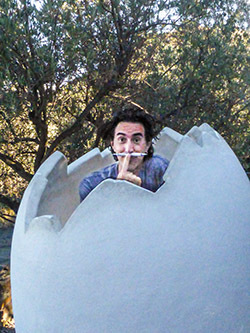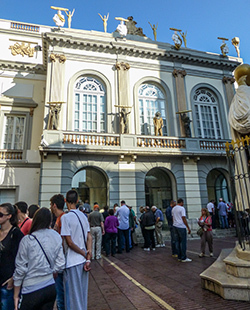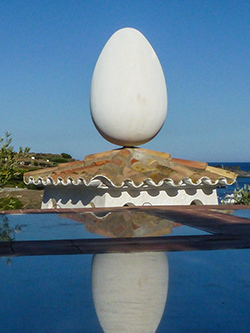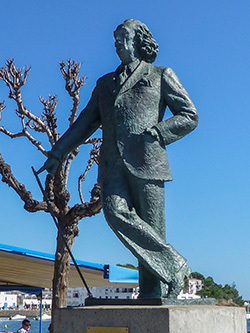HELLO DALI! You're Still Going Strong
PORT LLIGAT, Spain -- What's old in Catalonia, but as new as tomorrow's headlines? Not the Greek ruins at Empuries or Girona's Roman road, the Via Augusta. Certainly not the vineyards, long cultivated for "cava" wine; or Catalonia's rugged coastline, the Costa Brava, whose sandy coves are among the Mediterranean Sea's most inviting.
What's old and new is the enigmatic Spanish painter Salvador Dali (1904-1989), who made the sorry mistake of being born before his time. If you don't know Dali, he's the Catalonian-born artist who installed a huge broken egg on his house, and who painted The Persistence of Memory, a Surrealistic picture of bizarrely drooping clocks.
The average museum visitor didn't understand it, until the critics explained that it meant dream time is elastic. But what once struck most viewers as an inaccurate picture of odd pocket watches is now understood as a clue to its creator's inner life. And as Dali's art has found fresh admirers, so has he.
I didn't have the man in mind when I headed to a vacation on the Costa Brava, on Spain's northeast coast. As one of those happy but clueless gallery wanderers myself, Dali was never among my favorites. Instead, I'd been taking each day as it came, exploring Catalonia, touring Girona's ancient monuments, drinking coffee in sidewalk cafes, investigating archaeological sites, and of course, sampling the local cuisine. 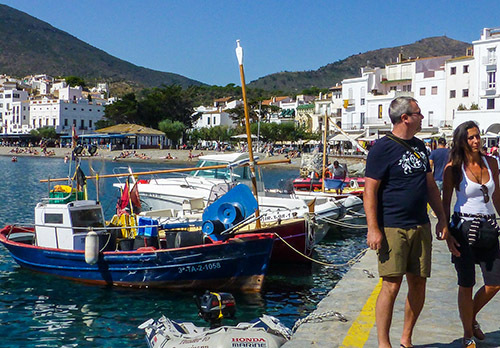
But a chance visit to Pubol Castle, the manor house that Dali bought for his wife Gala, was an eye-opener. Wandering from room to room prompted so many unanswered questions that I couldn't stop there. Hence a change of plans and a pilgrimage to the other places Dali called home: his childhood summer home in Port Lligat and the Dali Theatre Museum in Figueres, both within a couple of hours' drive of Barcelona. 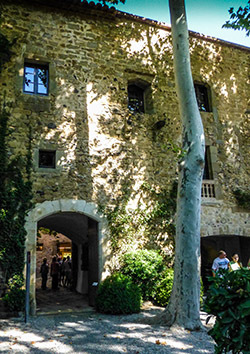
In the 1940s, when Dali and Gala fled Europe and moved to New York, "nice" people didn't take their troubles to a psychiatrist's couch. But cheerful eccentricity always guaranteed a lively dinner party. So Dali obliged. Already part of the city's art community, he became the celebrity of the moment, a gossip columnist's dream: glamorous, flamboyant and a showman.
When he wasn't mugging for the camera -- eyes staring, mustache waxed and curled -- his boundless reservoir of creativity revealed a man as unpredictable as he was self-absorbed. Some critics admired Surrealism and identified his work with theirs. Some were disgusted by the grotesque subjects he seemed to relish and accused him of using shock value to garner publicity. Only a few wondered whether the outpouring of strange images cloaked a tortured soul.
If you want to test your bona fides as an amateur psychologist, plan to visit what Ana, our guide at his house in Port Lligat, called the "Dali Three." Go first to Gala's House, which he bought for her, renovated, and decorated with paintings, tiles and murals. This was her private retreat, where he wasn't allowed to come, and where she could entertain admirers of both sexes. Be sure to see the current photography exhibit upstairs, an addition which puts an everyday face on the couple, documenting their travels, clowning for the camera and working in their studio. 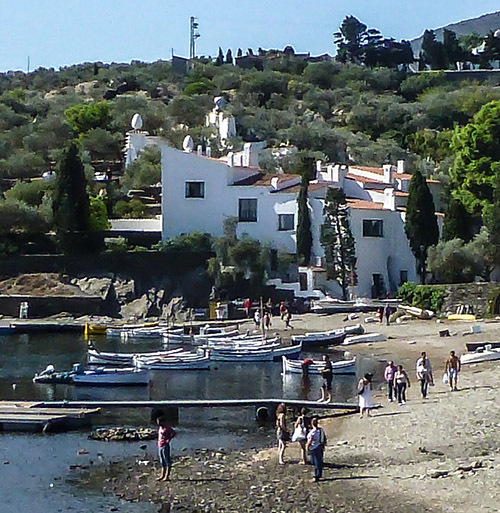
Next, visit his childhood summer home in Port Lligat, on the Mediterranean Sea near Cadaques, where he and Gala lived on and off, surrounded by a collection of fanciful souvenirs: a stuffed polar bear, strings of beads, hand-made furniture and bunches of dried "pearly everlasting" flowers. Other intriguing bits included a paper umbrella, half-finished canvases, a pool garden that pays homage to the Alhambra, and on the rooftop, two giant eggs representing Dali and his older brother. The brother, also named Salvador, who died as a toddler, was, as Dali said, "probably a first version of myself."
Third and last, visit the Dali Museum in Figueres. Make a reservation and come early in the morning to beat the crowds. Don't join a group of 40, but instead hire a private guide who's made a study of Dali. With a little professional help from him or her, it will be here in the museum where all the peculiar and disconnected symbols you've encountered elsewhere will come together. And you may just think, as I did, that Dali could be Spain's greatest 20th century painter.
Color images in this post are provided courtesy of Steve Haggerty/ColorWorld

